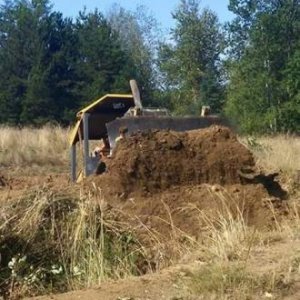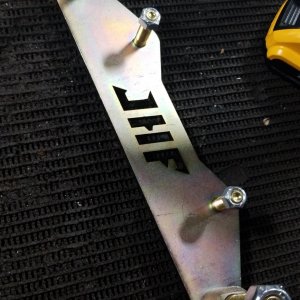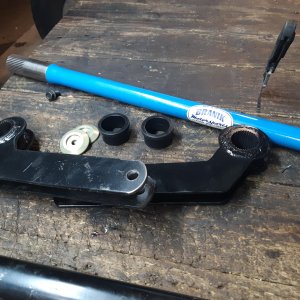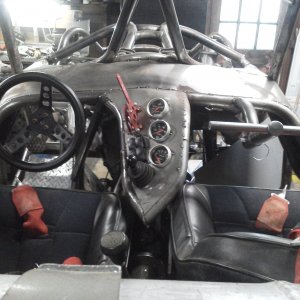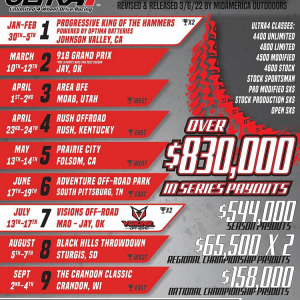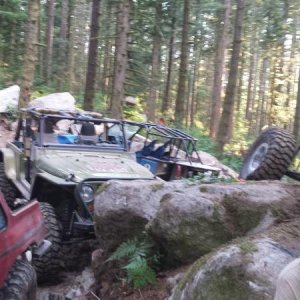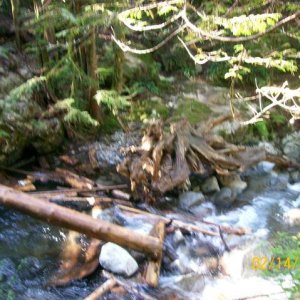No. You are trying to separate one thing into multiple components and then pretending that those components aren't related.
Funny thats what I said to you.. And I'm the one asking the question here
From wikipedia:
Ground pressure is the
pressure exerted on the ground by the
tires or
tracks of a motorized vehicle... Ground pressure can be calculated using the standard formula of
pressure:
P =
F/
A (object's
weight divided by contact area)
Ground pressure is equal to the weight divided by the area. That's what you insinuated with your measurement procedure at the beginning of the thread. That's fine. The part that you seem to disconnect from that equation is that the
area in that formula is determined by the air pressure in the tire. Of course it controls the size of the footprint. That's because
the area of the footprint is the only area of the tire that is able to transmit a force to the ground.
And again I covered this
From
this article:
"lowering pressure will raise the coefficient of friction by
reducing contact patch pressure and increasing the size of the contact patch."
Your lack of understanding (and consequent misinterpretation) of what I write doesn't make me any less correct. I never said that.
I understand what you have written I never said I don't understand you. I said your wrong.
I Ask a simple question to do some research and have a interesting perspective.
I ask for an average number understanding the level of precision we could establish if we took in to account every force pressure or even inersha if we were moving.. But I didn't ask for all that. I ask a simple question that gave a good estamit on the approximate psi on the ground
I said and explained there are variables but I was looking for an Average hell I even said make something up in the 3rd post.
Did you really go to the NHRA website to research for this? That was the most reliable source of empirical information you could think of?
Did I say I researched the NHRA.
You're partly right. The problem with the way you're thinking about it is that the air pressure along the entire outer surface of the tire isn't in contact with anything that it can exert a force upon except for the contact patch at the bottom. The tire isn't pushing UP on anything. Force is a vector. Vectors have magnitudes AND directions. Lacking either of the two, it's not a force.
Ya ok so we established you have "book smarts" Again I understand force I may also understand a little more then that. Its easy to play dumb and your playing smart and failing I didn't ask about this and if you feel compelled to write a bunch of long drawn out math equations your on the wrong board
Again, partially correct. And again, the problem is the way you're thinking about it. If the air's only purpose was to maintain the sidewalls' rigidity, then all of the force holding the vehicle up would be right at the edges of the tread, at the sidewalls. But it isn't. The air pressure inside the tire creates an equal surface pressure across the entire tread surface.
This is analization parlization 
ok Ill play
Things in a tire that effect grund pressure
1 the weight of said tire and said car,truck,buggie,etc its bolted to
2 the size of said tire
3 the surface said tire is in contact with in conjunction with said tire tread design
4 The engineered design of said tires steel or nylon bys cords in inner of the tire
5 The chemical make up of said tires rubber composition
6 And last tire pressure.. No why its last
If a tire is properly inflated and of a steel belted design th psi accost the entire surface of the tires contact patch is a lot more constant.. but if you air your tire down as any one who has and driven accost dirt can tell you the side of tread pattern digs in more due to supporting a majority of the weight because of an decrease in air pressure the center of the tire squishes in under load...
If I wanted to get this specific I would of ask to have all those variables to be measured.
Why do you keep implying that money or education level have anything to do with this? You don't know a thing about me except what you've seen online. Your unfounded assumptions do, however, reveal a lot about you. Please be so kind as to leave personal stuff out of here.

